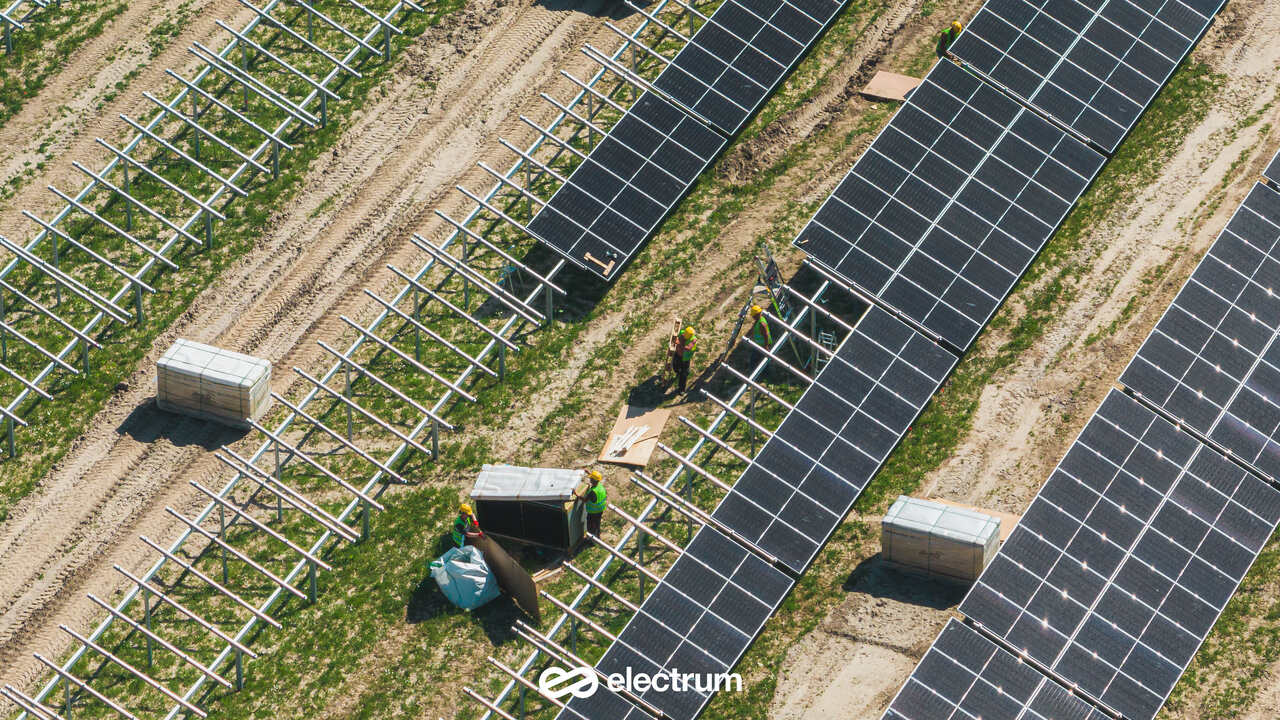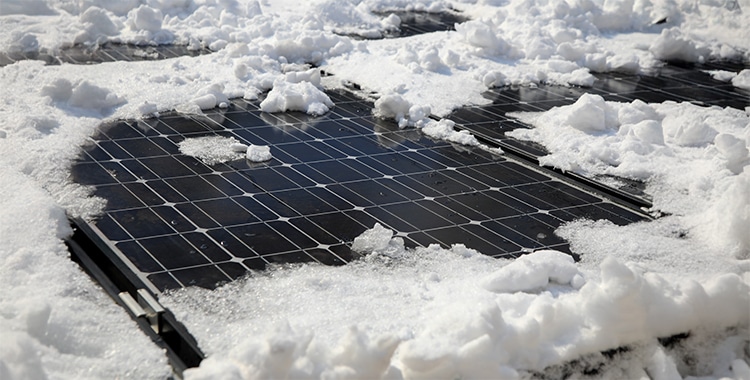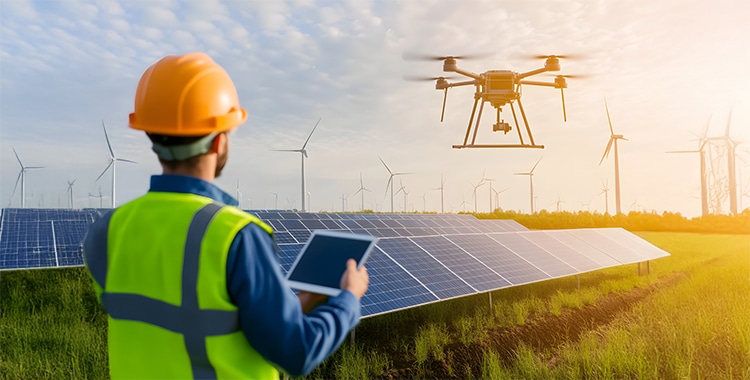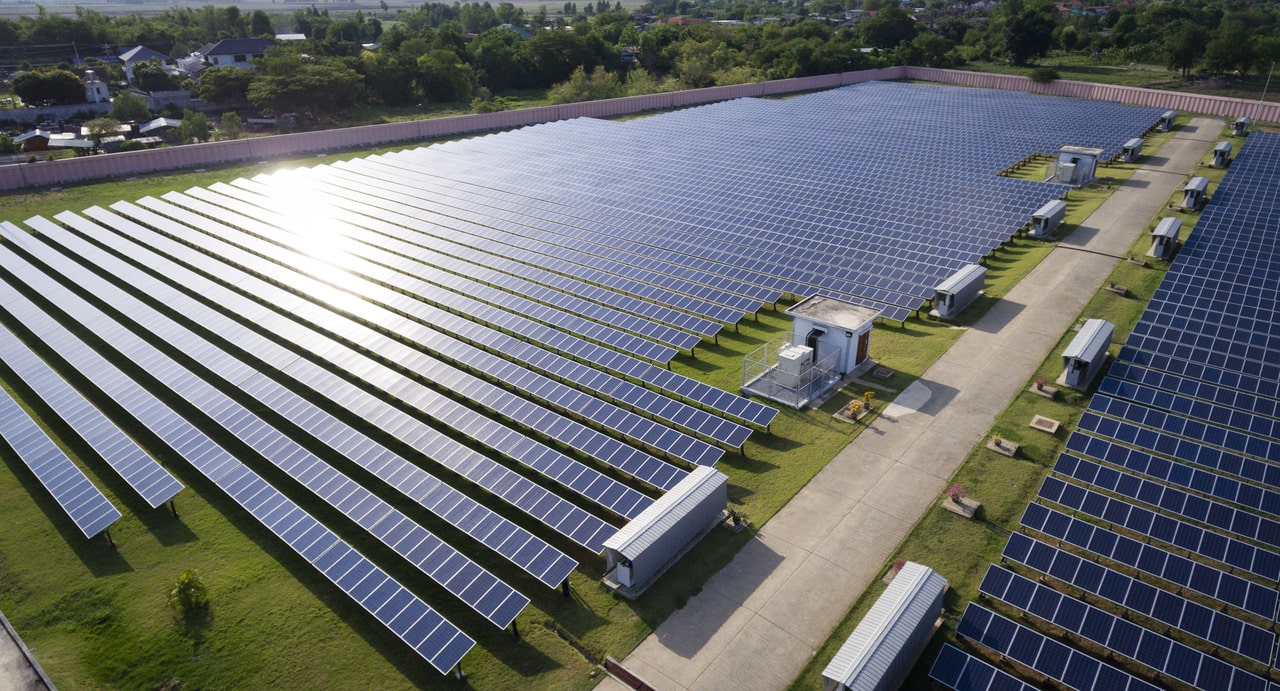At Electrum, we build solar farms, and high efficiency of solar panels is one of the key factors influencing the profitability of an investment (alongside installation costs, location, and effective energy management).
But what does it really mean for PV panels to be efficient? How do you calculate their efficiency, what causes performance drops, and under what conditions can efficiency increase? We invite you to read our guide, where we will uncover the secrets of solar panel efficiency.
What is the efficiency of solar panels?
The efficiency of solar panels is a measure of their ability to convert solar energy into electrical energy. It is expressed as the percentage of solar energy reaching the surface of the panel that is converted into usable electricity.
In other words, the efficiency of photovoltaics indicates what portion of the solar energy falling on PV panels is converted into electrical energy. Alternatively, we can refer to it as the effectiveness or performance of photovoltaic modules.
How to calculate it? How to check the efficiency of photovoltaic panels?
To calculate the efficiency of photovoltaics, you can use a simple formula. First, you need to gather the following data:
- Output power – the amount of electrical energy generated by the panel. For example, a 400 W panel means that under ideal conditions, it can provide a maximum of 400 W of power. When calculating PV panel efficiency, either nominal power (under ideal test conditions) or actual power (measured in real-world conditions) is used.
- Solar irradiance – the amount of solar energy reaching the Earth’s surface. Under standard test conditions (STC), this is assumed to be 1000 W/m².
- Panel surface area – the physical area of the photovoltaic panel through which radiation passes.
STC and PTC
Internationally, standardized conditions have been established for measuring the performance of photovoltaic installations.
In the context of photovoltaic panels, the STC (Standard Test Conditions) refers to internationally agreed-upon standard test conditions under which panel efficiency is determined. This allows for the comparison of different panels under identical conditions.
On the other hand, PTC (PVUSA Test Conditions) represents test conditions that aim to account for real-world environmental factors affecting a photovoltaic system’s performance.
Formula for Solar Panel Efficiency
Efficiency expressed as a percentage (%) = (Output Power (W) ÷ (Solar Irradiance (W/m²) × Panel Surface Area (m²))) × 100
For example, if a solar panel has a power output of 550 W, a surface area of 2.6 m² (e.g., a panel measuring approximately 2.2 m × 1.2 m), and solar irradiance of 1000 W/m²:
By applying these values to the formula, we obtain an efficiency of 21.15%.

More Accurate Data and panel monitoring
The efficiency of photovoltaic panels can be verified using specialized monitoring software. One such example is the EMACS energy asset management system, which is designed for both large-scale solar farms and installations with capacities up to 1 MW.
It enables users to:
- Track real-time energy production from PV panels.
- Analyze historical performance and efficiency of the panels.
- Optimize system operation and detect anomalies in photovoltaic installations.
Did You Know?
In large-scale solar farms, labor, wiring, mounting structures, and inverters are partially dependent on the number of installed panels. Using higher-power panels reduces the number of modules needed to achieve a specific capacity, which can lower installation and maintenance costs for a photovoltaic farm.
You may also be interested in the article: Solar energy monitoring
In what conditions can solar panel efficiency increase? 5 Key Factors
Before discussing efficiency losses, let’s explore situations where solar panel performance can actually improve:
- Strong sunlight and moderate temperatures – A cool yet sunny day is ideal for high efficiency, as extremely high temperatures increase electrical resistance, which can lower performance.
- Utilizing light reflection – Bifacial panels can capture reflected light from bright surfaces (such as snow), which can increase energy yield by several or even a dozen percentage points. Light can also reflect off water, a principle used in floating solar farms.
- Cleaning RES installation – If the panels were dirty, cleaning them can significantly boost energy generation, especially in regions with high dust levels.
- Wind effect – Solar farms located in windy areas can be more efficient since natural air circulation helps cool down the panels, reducing thermal losses.
- Using solar trackers – Trackers follow the movement of the sun, allowing energy output to increase by 25–40% compared to fixed-mount panels. Learn more in the article: Electrum to Execute One of Poland’s Largest Photovoltaic Projects Using Solar Trackers

Temperature Effect
The concept of the temperature effect is closely related to the efficiency of PV modules. Contrary to intuition, higher temperatures do not mean better performance.
Each panel has a temperature coefficient (e.g., -0.3%/°C to -0.5%/°C), which indicates how much its power decreases for every 1°C increase above 25°C (the standard test temperature – STC).
As a result, solar energy production in winter can be efficient, as lower temperatures help maintain higher panel performance.
Solar panel type comparison – Temperature coefficient and heat resistance
| Panel Type | Temperature Coefficient (Pmpp) | Heat Resistance | Description |
|---|---|---|---|
| Monocrystalline PERC | -0.35%/°C to -0.45%/°C | 🟠 Medium | Standard PV panels with enhanced PERC technology, improving efficiency and reducing costs. |
| Monocrystalline N-type (TOPCon, HJT) | -0.25%/°C to -0.35%/°C | 🟢 High | More advanced silicon panel versions, offering better efficiency and longer lifespan. |
| Bifacial (TOPCon, HJT) | -0.26%/°C to -0.35%/°C | 🟢 High | Dual-sided panels generating energy from both sides, increasing yield by 5–20%. |
| Amorphous (Thin-Film, CdTe) | -0.20%/°C to -0.25%/°C | 🟢 Very High | Lightweight and flexible thin-film panels, well-suited for hot climates. |
The choice of solar panel type depends on the installation site. For example, PERC cell technology is a great option if the priority is low cost and good performance in a moderate climate.
Read more: How to Choose the Best Location for Solar Panels?
When does solar panel efficiency decline and How to handle it?
The loss of efficiency and reduced performance of solar panels can result from:
- Surface contamination – Dirt and dust reduce the amount of sunlight reaching the panels. Regular cleaning helps maintain efficiency. Read more: PV panel maintenance: The key to extended life and efficiency
- Overheating – A common issue in hot climates that can lower panel performance.
- Aging – After 10 years, panel efficiency may decrease. It’s important to check the expected degradation rate from the manufacturer.
- Shading – Even partial shading from trees, chimneys, antennas, or buildings can significantly reduce system output. This is why a professionally solar power system design is essential.
- Incorrect panel positioning – Improper tilt angle or wrong orientation can reduce efficiency. Read more: What is the optimal solar panel tilt angle? Poland and the world
Smearing Effect (Mismatch Effect or Hot Spot Effect)
The smearing effect (also known as the “mismatch effect” or “hot spot effect”) is a phenomenon that can occur in photovoltaic installations, leading to a decrease in panel efficiency.
This effect is associated with the uneven performance of individual modules within a single installation, which can result in excessive overheating of certain panels and, in extreme cases, permanent damage.
For this reason, it is crucial to regularly monitor the entire photovoltaic system, allowing for quick detection of underperforming panels, which can then be repaired or replaced efficiently.

Solar Panel Efficiency and Frequently Asked Questions
What is the standard efficiency of solar panels in Poland?
The standard efficiency of solar panels in Poland typically ranges between 15% and 25%, depending on the panel technology.
How does solar panel efficiency change in winter?
In winter, panel efficiency may increase due to lower ambient temperatures, which improve performance. However, reduced sunlight and shorter days mean the total energy production is lower.
What is nominal efficiency vs. actual efficiency?
Nominal efficiency refers to the theoretical efficiency of a panel under Standard Test Conditions (STC).
Actual efficiency is the real-world performance of a panel in a specific location, considering factors such as temperature, sunlight, and tilt angle.
In other words, nominal power is the maximum power output a panel can generate under ideal test conditions (STC). Peak power refers to the highest power output achievable in real-world conditions.
How does the efficiency of polycrystalline panels compare to other types?
The efficiency of polycrystalline panels typically ranges between 15% and 18%, which is lower than that of monocrystalline panels (20–23%). Polycrystalline panels are cheaper but less efficient at converting solar energy.
What is IBC and PERC cell technology?
IBC (Interdigitated Back Contact) cells have all electrical contacts on the back of the cell, increasing efficiency and reducing energy losses.
PERC (Passivated Emitter and Rear Contact) technology involves a special rear layer that improves efficiency by reducing energy loss.
How to prevent solar panel overheating?
To prevent overheating, ensure:
- Proper ventilation around the panels
- Installing panels at the correct tilt angle for better airflow
- Using active or passive cooling systems to maintain optimal temperature
What to do when efficiency decreases?
If efficiency declines, conduct a system inspection to detect damage or dirt accumulation on the panels.
What is the temperature coefficient Pmax?
The temperature coefficient Pmax indicates how much power output drops per degree of temperature increase above 25°C. It typically ranges from -0.3%/°C to -0.5%/°C.
What are NOCT conditions?
NOCT (Nominal Operating Cell Temperature) is the temperature at which a solar cell reaches its nominal power output under real operating conditions, such as: 20°C ambient temperature, 800 W/m² solar radiation and light wind.
This metric helps evaluate panel performance in real-world conditions.
How does solar panel cooling work?
Solar panel cooling involves: ensuring proper airflow around the panels, using active cooling systems (e.g., water or air cooling), applying passive cooling methods like heat-dissipating coatings.
What are amorphous silicon panels?
Amorphous silicon panels are thin-film solar cells with lower efficiency (6–10%), but they are cheaper to produce, flexible, allowing installation on various surfaces (e.g., roofs, vehicles).
How does modern solar panel cleaning work?
Modern solar panel cleaning includes automated cleaning robots that remove dust and debris, specialized cleaning agents or deionized water to prevent damage, AI-powered cleaning systems for enhanced efficiency and monitoring.
Read more:
Innovations in photovoltaic farm service
AI in Energy Sector: How AI is Transforming the Renewable Energy Industry

